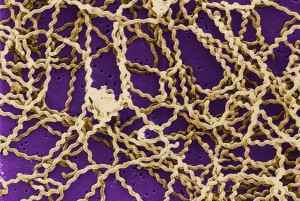Health officials with the Provincial Epidemiological Surveillance System are reporting 50 confirmed cases of leptospirosis in Santa Fe province during the first quarter of 2015, according to an El Litoral report (computer translated).

Of the more than 500 febrile events that were investigated by the health department these three months, 50 were laboratory confirmed for the bacterial disease. “Most of them received outpatient treatment with a good outcome,”a health ministry spokesperson said. However, three fatalities were reported: one in Santa Fe, one in Chabás and third in Rosario.
Health department officials advise the public to avoid contact with standing water, use appropriate protective measures when working in hazardous areas: boots and gloves, keep patios and gardens clean, weeding wastelands, cover the holes in the home where they can enter rodents remove trash and debris, condition them to not become a haven for rodents and place garbage in containers with tight lids.
For your information: Massey University researchers produce Leptospirosis video series
Leptospirosis is a bacterial disease that affects humans and animals. It is caused by bacteria of the genus Leptospira.
The bacteria that cause leptospirosis are spread through the urine of infected animals, which can get into water or soil and can survive there for weeks to months.
In humans, it can cause a wide range of symptoms, some of which may be mistaken for other diseases. Some infected persons, however, may have no symptoms at all.
Without treatment, Leptospirosis can lead to kidney damage, meningitis (inflammation of the membranearound the brain and spinal cord), liver failure, respiratory distress, and even death.
In addition, nearly 150 cases of suspected hantavirus were investigated and five cases were confirmed. The cases occurred in Arroyo Seco (1), Rosario (1) San Jorge (1) Santa Fe (1) and a last case of another province (San Nicolás, Buenos Aires). All have been treated and are in good condition.


2 thoughts on “Argentina: 50 leptospirosis cases confirmed in Santa Fe province”